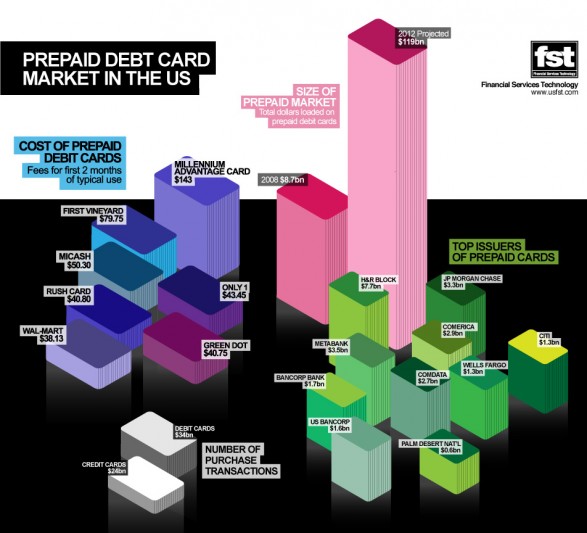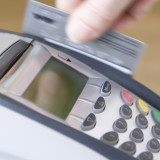By Shane Tripcony
One of the most prominent messages on the homepage of Green Dot Corporation, a longtime issuer of prepaid debit cards, is a simple one. “Big Banks, No Thanks,” blares a nearly screen-sized headline, which alternates between a promotional message about something consumers likely care a good bit more about: a chance to win a year of free gas.
In many ways, this short, punchy salvo – which is buttressed with the message, “The Green Dot Card is the smart and easy way to manage your money,” along with a 5- question quiz that purports to answer whether a Green Dot Card is right for you – says an enormous amount about the state of the prepaid debit card industry today. It’s hardly a new flash to readers of this site, but large financial institutions of all sorts, including American Express and JP Morgan Chase, have begun offering prepaid debit cards in hopes of grabbing a slice of this quickly expanding and lucrative market.
For prepaid debit card consumers, the attention of big financial players has been an undeniably good thing: fierce competition among rivals, some of whom are willing to forgo chunks of revenue in the short-term in order to gain market share, have put much needed downward pressure on fees and increased overall transparency. But longstanding industry players like Green Dot could be forgiven for not being thrilled with the prospect of tough competition that threatens to eat away at their profits.
Still, Green Dot’s web page swipe at its competitors isn’t exactly an effort to mask the company’s weakness. In fact, on July 30 of 2013 the company announced results for the second quarter and Green Dot seems to be holding its own just fine, thank you. Indeed, the California-based company reported net income of $11.3 million for the quarter, which was 4 percent higher than the same period in 2012. Additionally, revenue topped $142million, which was also 4 percent higher than the previous year. At the same time, Green Dot provided an improved full-year guidance, announcing that it expects operating revenue to come in somewhere between $565 million and $575 million and earnings per share to be in the $1.05 to $1.20 range. The better than expected results prompted Green Dot’s shares to jump 16 percent the day after its announcement.
“Despite aggressive competition from large financial services companies and rigid self-imposed risk controls that materially reduced new customer enrollment, we believe Green Dot remains the clear leader in the prepaid space and is well positioned for the future,” said the company’s CEO Steve Streit. And far from going on the defensive, Green Dot also unveiled a distribution partnership with the likes of Home Depot and Dollar General, which will up its nationwide presence by about 20,000 retail locations.
None of this is to say that Green Dot doesn’t face challenges, as Motley Fool contributor Jordan Wathen goes at lengths to explaining a recent post, citing in particular the threat posed by American Express Company’s Bluebird card. But whatever the threats may be, it seems clear that Green Dot won’t be going away quietly.







